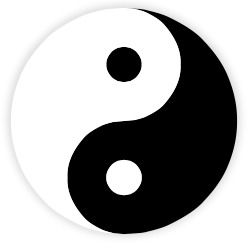Sleep
Do You Sleep to a Binaural Beat?
Research gives insight to the use of a novel relaxation strategy using sound.
Posted September 30, 2018
In the last two posts, I discussed some unusual ways in which some people respond to certain very ordinary sounds. In the case of ASMR, sounds like tapping, tearing, and popping can lead to tingling sensations associated with relaxation and even drowsiness. In the case of misophonia similar sounds, like swallowing and lip-smacking, can also cause a tingling sensation, but one accompanied by disgust and even rage. Binaural beats are a different kind of sound and many people report finding certain of them relaxing and even conducive to falling asleep. Other people do not like them and after hearing them once never want to hear them again.
According to the Wikipedia entry “(i)n acoustics a beat is an interference pattern between two sounds of slightly different frequencies, perceived as a periodic variation in volume whose rate is the difference of the two frequencies.” Further, a binaural beat is “… an auditory illusion perceived when two different pure-tone sine waves, both with frequencies lower than 1500 Hz, with less than a 40 Hz difference between them, are presented to a listener dichotically (one through each ear)”. If the two frequencies are, say, 5 Hz apart as in 500 and 505 Hz, then a third tone at 5 Hz will be heard in addition to the two pure tones. What this technique allows for is the creation of an apparent auditory signal that can be perceived and that is at a predictable frequency. In this way, relatively low frequencies can be generated that can be easily perceived and that can correspond to the common brainwave frequency bands. These are often categorized as delta (0.5 – 4 Hz), theta (4 – 7 Hz), alpha (8 – 12 Hz), and beta (13 – 16 Hz). You may find somewhat different ranges and bands other than these listed depending on the source you consult. It is also possible to produce flashes of light that can be administered within these frequency bands but there is some risk of inducing seizures in susceptible individuals. While the most common frequency range for inducing seizures is 15 – 25 Hz, unfortunately, the possible range is 1 – 65 Hz, which covers essentially the whole range of standard EEG frequency bands. This makes use of sound stimulation safer than visual or combined audio/visual stimulation.
But what would be the point of generating a beat that was at the same rate as a certain brainwave frequency? First, consider that these frequency bands relate to different states of awareness. Delta is seen in deep sleep, theta in lighter stages of sleep, alpha when we are relaxed with eyes closed, and beta when we are awake and alert. Second, the main idea behind using binaural beats to help a person relax and sleep is that of entrainment. Entrainment means that a biological process is matched to some external stimulus. For example, our circadian clock is entrained to the day/night light cycle and helps the body organize physiological processes in an appropriate way over the course of the day. A repetitive sound at the frequency of a certain brainwave band could theoretically cause the brain waves to be entrained to that frequency and thus help induce the state associated with that brainwave band. This could have therapeutic utility.
For many years this principle of entrainment has been used as a part of neurofeedback to help patients change their brain wave patterns in the hope of ameliorating the symptoms of dysregulated brain processes that are hypothesized to contribute to various disorders such as ADHD, anxiety, and depression. There is some evidence that neurofeedback combined with photic stimulation (e.g. Hammond, 2000) can help depression and that auditory and visual stimulation can help cognitive abilities in children with learning disabilities (e.g. Olmstead, 2005).
There has been considerable interest in the potential of auditory beat stimulation to affect cognition and mood states. Chaieb, Wilpert, Reber, & Fell (2015) reviewed the literature on the effects of auditory beat stimulation on memory, creativity, attention, anxiety, mood, and vigilance. They found some support for it being able to affect these modalities but there were contradictory findings. So the area clearly requires significantly more research before firm conclusions can be drawn.
This kind of conflicting evidence regarding the effectiveness of binaural beats to produce valid and reliable changes in brain waves abounds in the literature. For example, Rosenfeld, Reinhart, & Srivastava, (1997) found that in a sample of normal college students, alpha and beta audiovisual stimulation showed evidence of brainwave entrainment, but baseline levels of alpha and beta among the participants affected the observed degree of entrainment, producing significant individual differences in response. López-Caballero & Escera (2017) found that administration of binaural beats in the various frequency bands produced no changes in EEG spectral power between the time periods of baseline and those periods with beats presented. Likewise, Wahbeh, Calabrese, Zwickey, & Zajdel (2007) found no effect on brainwaves with the administration of alpha frequency binaural beats. It is easy, however, to find personal testimonials online.
Despite the lack of solid evidence of the effectiveness of binaural beats in producing brainwave changes, and that those changes can be effective in altering our conscious states, there do exist hours of recorded binaural beat videos available on YouTube. Some of these are just straight beats designed to ease the listener into various states by gradually varying the frequencies of the beats. A nice example of this can be found in a 90-minute video by Jody Hatton. Others embed the beats into a musical score, which some people find easier to listen to. Spotify has a whole playlist devoted to binaural beats. You can try these and many others to see if this is something that may be helpful to you. The soothing nature of the sounds may be what really helps, but that’s fine if you just want to relax and drift off to sleep. You can also find quite a few apps that generate binaural beats at your phone’s app store. If you want to relax and sleep just be sure to set the frequency in the theta range (4 – 7 Hz). Patients have reported to me that they felt energized or even anxious after listening to a few minutes of the beats, but this was usually because they were set to a high frequency like beta (13 – 16 Hz). Be sure to try listening to the beats for a short time and if they have a negative effect, just stop listening. If you find them helpful, that’s great, and you have a new technique that can be used to promote relaxation, something most of us can use.
Chaieb, L., Wilpert, E.C., Reber, T.P., & Fell, J. (2015). Auditory beat stimulation and its effects on cognition and mood states. Frontiers in Psychiatry, 6 (70). doi: 10.3389/fpsyt.2015.00070
Fisher, R.S., Harding, G., Erba, G., Barkley, G.L., & Wilkins, A. (2005).Photic- and Pattern-induced Seizures: A Review for the Epilepsy Foundation of America Working Group. Epilepsia,46 (9), pp. 1426–1441. Blackwell Publishing, Inc.
Hammond, C.D. (2000). Neurofeedback Treatment of Depression with the Roshi, Journal of Neurotherapy, 4(2), pp. 45-56, DOI: 10.1300/J184v04n02_06
López-Caballero, F., & Escera, C. (2017) Binaural Beat: A Failure to Enhance EEG Power and Emotional Arousal. Frontiers in Human Neuroscience. 11 (557). doi: 10.3389/fnhum.2017.00557
Olmstead, R. (2005). Use of Auditory and Visual Stimulation to Improve Cognitive Abilities in Learning-Disabled Children, Journal of Neurotherapy, 9 (2), pp. 49 — 61. DOI: 10.1300/J184v09n02_04
Rosenfeld, J.P., Reinhart, A.M. & Srivastava, S. (1997). Applied Psychophysiology and Biofeedback 22 (1), pp 3 - 20. https://doi.org/10.1023/A:1026233624772
Wahbeh, H., Calabrese, C., Zwickey, H., & Zajdel, D. (2007). Binaural beat technology in humans: a pilot study to assess neuropsychologic, physiologic, and electroencephalographic effects. Journal of Alternative and Complementary Medicine, 13 (2), pp. 199 – 206.





